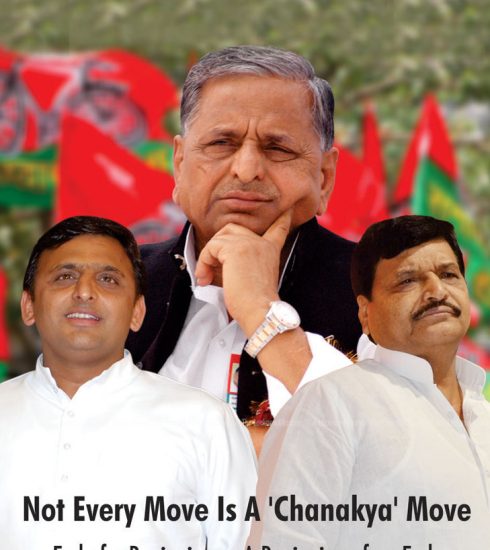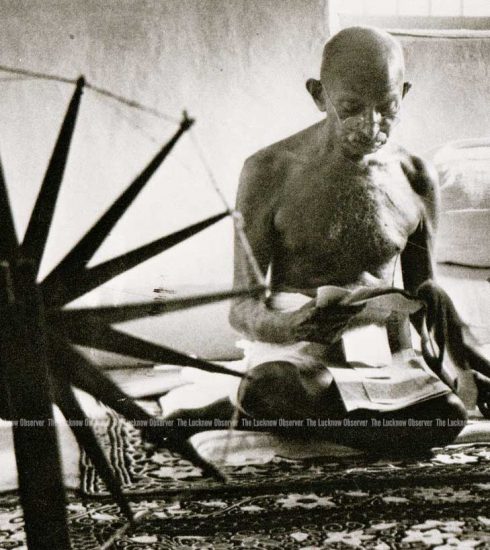The hold your breath election this April
Vijay Dutt reports from Delhi on what boils over this election month in the political kettle apart from tea!
General elections are held in the country every five years. But this April, the elections are expected to be unique. This is due to the ripple effect caused by Arvind Kejriwal’s dive into the political ocean with the Aam Aadmi Party (AAP) founded by him.
Although Kejriwal was able to hold power as Chief Minister of Delhi only for 49 days, he did make individuals participate in choosing candidates and in preparing the manifesto together with ordinary members of the party.
For the first time a political leader invited people to participate in the process of forming a government. Kejriwal made people believe that “it” is their government and instilled in them a sense of power. Armed with a broom, his election symbol, Kejriwal and AAP members went door-to- door to ask for votes. This news spread, at least in all urban areas of the country and there was much appreciation for Kejriwal.
But in a general election this kind of canvassing is almost impossible, especially given India’s population. Yet people are now demanding, as a matter of right, a say in the formation of government. They also want to know what politicians and a party will do for them if voted to power.
It is not certain what Kejriwal plans to do to cover up the nearly impossible task of contacting maximum number of voters. Rahul Gandhi chose 25 constituencies where his cadre will be in touch with people to find out what they want and the candidates they would like to vote for.
Rahul went to the New Delhi station and talked to porters about what they want from a government. But 25 constituencies are nothing and it is to be seen if Rahul is able to get more Congressmen to have more face to face meetings with voters.
Time is too short
Narendra Modi’s team of about 25 computer and technology experts are far ahead after having innovated the ‘chai pe charcha campaign’ and have already reached a maximum number of people. This way the people have come to know about Modi’s plans and objectives. For this idea, Modi has Mani Shankar Aiyer to thank. It was Aiyer’s taunt that a chaiwala can never become Prime Minister of India, which converted the insult into an advantage.
Mamta Banerjee, the Congress Party and others have called the chai pe charcha election campaign a gimmick. She dubs it a “drama” ahead of the Lok Sabha polls. According to Mamta, politics does not mean posing for the media. Politics needs dedication and devotion and simple living.
Likewise many others said that the chai pe charcha is just a sale and self-promotion gimmick, a street theatre which people watch and forget. Alyque Padamsee, theatre personality said that at one chai pe charcha he saw hardly 40 people. Most liberal and green-faced rivals allege that this is a street tamasha of Modi.
However, it is inevitable in politics that political opponents are critical of each other particularly on the eve of any election. But Dilip Cherian, ace advertising man, sees a Modi wave blowing in the country and that the chai pe charcha idea is a good one to reach out to people. Modi has harnessed and is harvesting the wave and riding high on it. Asked whether a high tide could drown him, Cherian said that is not possible as Modi is well prepared to take knocks but not to fall.
Prahlad Kakkar, another advertising guru too feels that the Modi wave is unstoppable and the chai pe charcha is the best extension of the door to door campaign of Kejriwal. This way, Modi is able to talk directly to the masses and finds out what people want.
At the moment BJP seems to have forged far ahead in its direct contact with people. The tea stalls at a 1000 different locations are spread across 300 cities where a cup of tea is sold for Rs.3 instead of the normal rate of Rs.5. Even if not many are won over by Modi, at least lakhs of tea stall owners are thanking Modi for the good business they are doing during this election campaign. Whether the tea stall owners will also vote for Modi, is to be seen.








